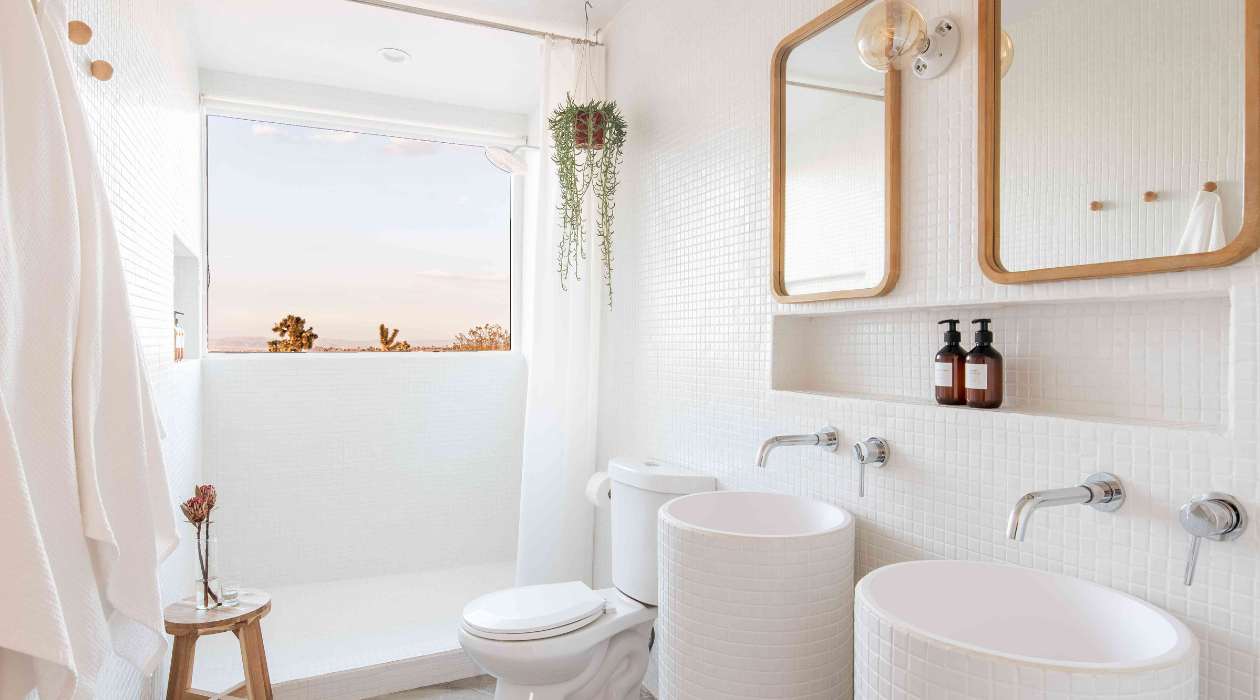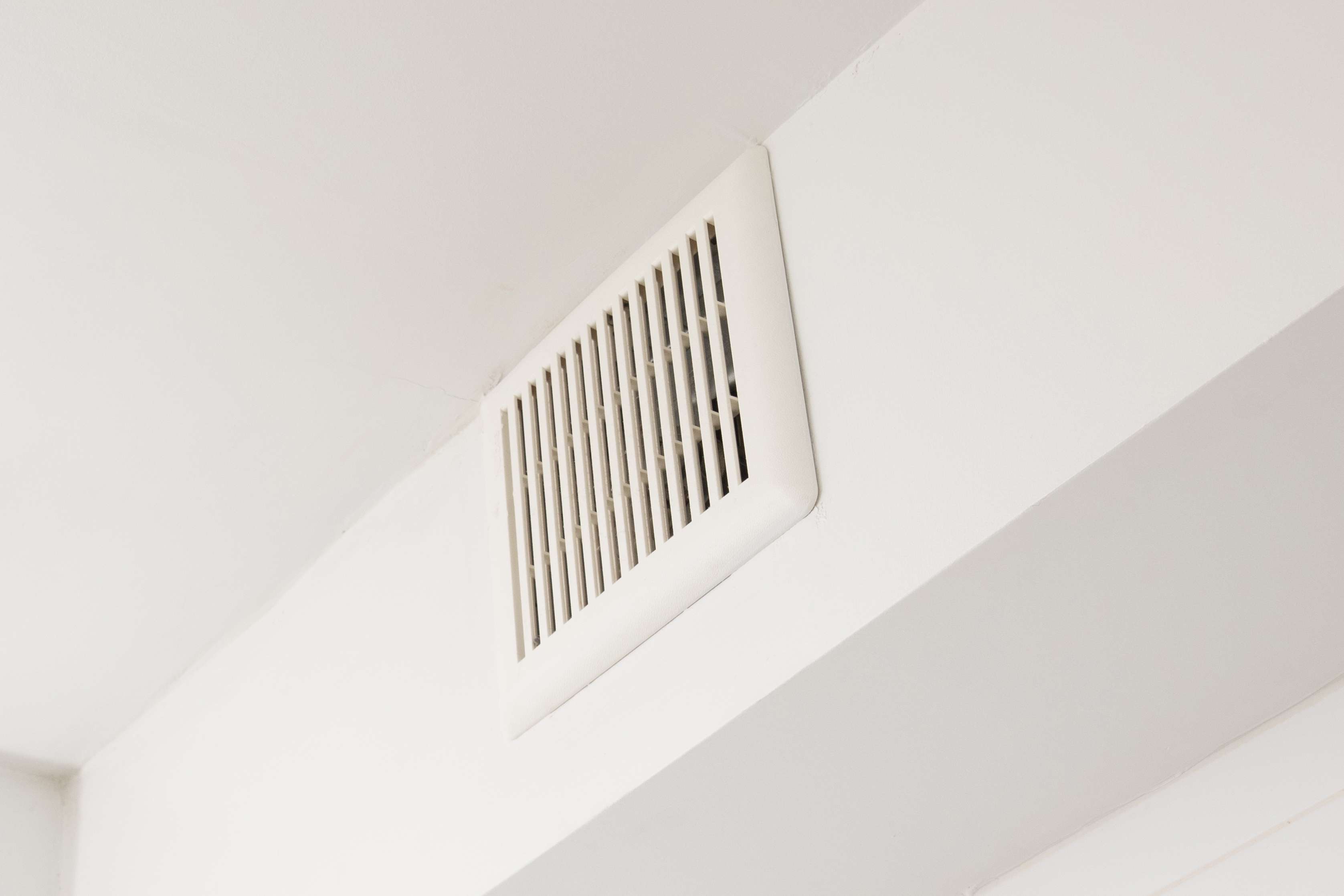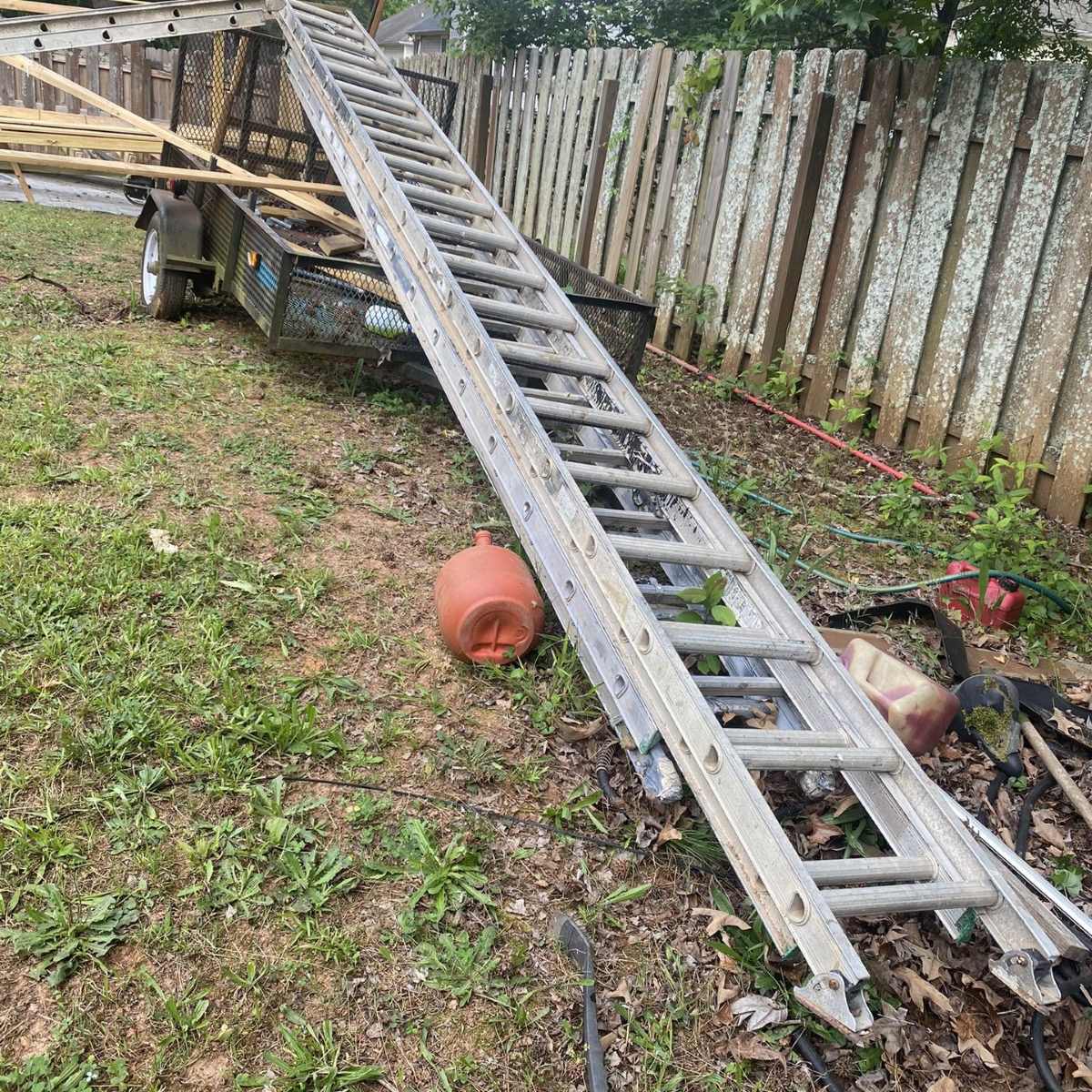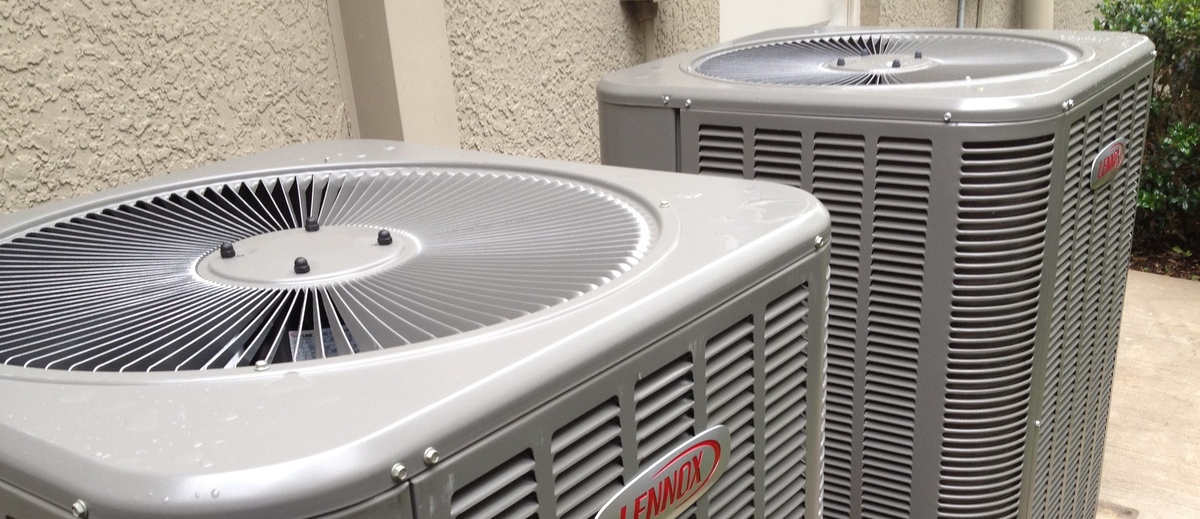Home>Home Maintenance>How To Choose A Ventilation System For Your 40-Square Foot Restroom


Home Maintenance
How To Choose A Ventilation System For Your 40-Square Foot Restroom
Modified: March 6, 2024
Improve your home maintenance with a reliable 40-square foot restroom ventilation system. Ensure fresh air circulation and prevent moisture issues.
(Many of the links in this article redirect to a specific reviewed product. Your purchase of these products through affiliate links helps to generate commission for Storables.com, at no extra cost. Learn more)
Introduction
Welcome to the world of home maintenance, where the simple act of keeping your house in top shape can lead to a happier and healthier living environment. One crucial aspect of home maintenance is ensuring proper ventilation, especially in areas like the restroom. In this article, we will explore the importance of restroom ventilation and dive deep into the intricacies of a 40-square foot restroom ventilation system.
A well-ventilated restroom is essential for a variety of reasons. Firstly, it helps to remove unpleasant odors, ensuring a more pleasant experience for users. It also helps to control humidity levels, preventing the growth of mold and mildew, which can have detrimental effects on both the structure of the restroom and the health of the occupants. Additionally, a properly ventilated restroom helps to minimize the accumulation of harmful gases, such as carbon monoxide, ensuring a safer environment for everyone.
However, ventilating a small space like a 40-square foot restroom can present a unique set of challenges. The confined area and limited airflow make it essential to choose the right ventilation system and install it strategically to ensure maximum efficiency.
In this article, we will provide a comprehensive guide to understanding the 40-square foot restroom ventilation system. We will explore the various components of the ventilation system, the installation process, maintenance and cleaning guidelines, and the benefits of having an efficient restroom ventilation system. Additionally, we will discuss common issues that may arise and provide troubleshooting tips to help you keep your ventilation system running smoothly.
Whether you are a homeowner looking to improve your restroom’s ventilation or a professional seeking guidance on maintaining these systems, you’ve come to the right place. So, let’s dive in and explore the world of 40-square foot restroom ventilation systems!
Key Takeaways:
- Proper ventilation in a 40-square foot restroom is crucial for removing odors, controlling humidity, and ensuring a healthier environment by preventing mold growth and harmful gas accumulation.
- Installing and maintaining an efficient ventilation system not only improves air quality and user experience but also extends the durability of the restroom while promoting energy efficiency and safety.
Read more: How Many HVAC Vents Per Square Foot
Importance of Restroom Ventilation
Proper ventilation in restrooms is of utmost importance for various reasons. Let’s take a closer look at why having an effective ventilation system in your restroom is essential:
- Odor Control: Restrooms are prone to unpleasant odors that can linger and create an uncomfortable environment. Ventilation systems help in removing these odors by extracting the stale air and replacing it with fresh, ventilated air. This not only improves the overall experience for users but also leaves a positive impression.
- Humidity Regulation: Bathrooms are high-moisture areas, resulting in increased humidity levels. If left unchecked, this excess moisture can lead to the growth of mold and mildew, which can damage surfaces and jeopardize the health of occupants. Proper ventilation helps in expelling humid air and maintaining optimal humidity levels, reducing the risk of mold growth.
- Removal of Harmful Gases: Restrooms can harbor harmful gases, such as carbon monoxide, which can be released from cleaning chemicals or gas-powered appliances. Ventilation systems help in extracting these gases, ensuring a safer indoor environment. This is particularly important in enclosed spaces where the buildup of gases can become hazardous.
- Health and Hygiene: A well-ventilated restroom promotes a healthier and more hygienic environment by reducing the spread of bacteria and other pathogens. Improved air circulation helps in preventing the buildup of contaminants, improving the overall air quality and reducing the risk of respiratory issues.
- Prevention of Structural Damage: Excessive moisture and humidity can damage the structural integrity of a restroom, leading to rot, peeling paint, and warped surfaces. Ventilation systems effectively remove moisture, preventing costly repairs and extending the lifespan of the restroom.
By prioritizing proper restroom ventilation, you can create a more comfortable, hygienic, and safe environment for both yourself and your guests. The benefits extend beyond immediate comfort and contribute to the overall well-being and longevity of your restroom.
In the next section, we will delve into the specific challenges that arise when ventilating a 40-square foot restroom and explore the solutions available to overcome these obstacles.
Challenges of Ventilating a 40-Square Foot Restroom
Ventilating a small space like a 40-square foot restroom comes with its own set of challenges. Limited space and constrained airflow require careful consideration when selecting and installing a ventilation system. Let’s explore some of the main challenges faced in ventilating a restroom of this size:
1. Limited Air Exchange: The small size of a 40-square foot restroom means that the volume of air available for exchange is significantly reduced. This can result in poor ventilation and the accumulation of odors, moisture, and harmful gases if not properly addressed.
2. Insufficient Air Circulation: Due to the limited space, air circulation can be restricted, especially if there are no windows or other openings to facilitate airflow. Stagnant air can lead to increased humidity levels, mold growth, and discomfort for users.
3. Noise Concerns: In confined spaces, noise from ventilation systems can be more noticeable and potentially disruptive. Finding a balance between effective ventilation and minimizing noise levels is crucial for a pleasant restroom experience.
4. Space Constraints: Limited space can make it challenging to find suitable locations for ventilation system components, such as the fan and ductwork. It is important to consider space-saving options and strategically plan the installation to maximize functionality without compromising design or convenience.
5. Energy Efficiency: Small spaces often require ventilation systems with lower airflow capacity. Balancing the need for sufficient ventilation with energy efficiency can be a challenge, as smaller systems may need to run for longer periods to achieve the desired air quality.
While these challenges may seem daunting, they can be overcome with proper planning and the right ventilation system designed specifically for small restrooms. In the next section, we will take a closer look at the components of a 40-square foot restroom ventilation system, helping you understand how these systems effectively address the challenges of limited space and airflow.
Understanding the 40-Square Foot Restroom Ventilation System
To effectively ventilate a 40-square foot restroom, it is crucial to understand the components of a ventilation system designed specifically for this purpose. Let’s explore the key elements of a 40-square foot restroom ventilation system:
1. Exhaust Fan: The exhaust fan is the heart of the ventilation system. It is responsible for extracting stale air, odors, and moisture from the restroom and expelling it outside. When selecting an exhaust fan for a small space, it is important to choose one with an appropriate airflow capacity to ensure efficient ventilation.
2. Ductwork: Ductwork connects the exhaust fan to the outside of the building, allowing for the removal of extracted air. In a 40-square foot restroom, flexible ductwork is commonly used due to its flexibility and ability to fit into tight spaces. Properly sized and insulated ductwork helps to minimize noise and maintain optimal airflow.
3. Vent Cover: The vent cover, also known as the exhaust grille or vent hood, is located on the exterior of the building. It serves as the outlet for the extracted air and prevents debris and pests from entering the ductwork. Vent covers are available in different sizes and designs to suit various architectural styles.
4. Controls and Switches: A ventilation system typically comes with controls and switches that allow users to adjust the fan speed, set timers, or activate occupancy sensors. These features help in optimizing energy consumption and ensuring that the ventilation system operates when needed.
5. Optional Add-ons: Depending on the specific needs and preferences, additional features can be incorporated into the ventilation system. These may include humidity sensors to automatically adjust fan speed based on moisture levels, motion sensors to activate the fan when someone enters the restroom, or even integrated lighting for added convenience.
Understanding these components and their functions will empower you to make informed decisions when selecting and installing a ventilation system for your 40-square foot restroom. In the next section, we will guide you through the installation process, ensuring a successful implementation of your restroom ventilation system.
Components of the Ventilation System
A successful ventilation system for a 40-square foot restroom relies on several key components working together to ensure efficient airflow and optimal air quality. Let’s explore the main components of a ventilation system in more detail:
1. Exhaust Fan: The exhaust fan is at the core of the ventilation system. It is responsible for removing stale air, odors, and moisture from the restroom. When choosing an exhaust fan, consider factors such as airflow capacity, noise level, energy efficiency, and the specific requirements of your restroom size.
2. Ductwork: Ductwork connects the exhaust fan to the exterior of the building, providing a pathway for the expelled air. In a 40-square foot restroom, flexible ductwork is commonly used due to its ability to fit into tight spaces. Properly sized and insulated ductwork helps to minimize air leakage and maintain the desired airflow.
3. Vent Cover: The vent cover, also known as the exhaust grille or vent hood, is located on the exterior of the building and serves as the outlet for the expelled air. Vent covers are designed to prevent debris and pests from entering the ductwork while allowing for the unrestricted flow of air. Choose a vent cover that matches the architectural style of your building and provides sufficient airflow.
4. Controls and Switches: Controls and switches allow you to manage the operation of the ventilation system. These may include fan speed controls, timers for automated operation, or occupancy sensors that activate the fan when someone enters the restroom. Consider these features based on your specific needs and preferences to optimize the ventilation system’s functionality and energy efficiency.
5. Optional Add-ons: Depending on your requirements, you may consider incorporating additional features into your ventilation system. These can include humidity sensors that automatically adjust the fan speed based on moisture levels, motion sensors that activate the fan when motion is detected, or integrated lighting fixtures for added convenience and functionality.
By understanding the purpose and functionality of each component, you can make informed decisions when selecting a ventilation system for your 40-square foot restroom. Remember to consider factors such as size, noise level, energy efficiency, and compatibility with your restroom’s layout and design. In the next section, we will guide you through the installation process, ensuring a seamless and effective implementation of your ventilation system.
Make sure the ventilation system is rated for at least 40 square feet to effectively remove moisture and odors. Check for features like quiet operation and energy efficiency. Regular maintenance is key to keeping the system running smoothly.
Read more: How To Calculate Attic Square Footage
Installation Process
The installation of a ventilation system for a 40-square foot restroom requires careful planning and attention to detail. Follow these steps to ensure a successful installation:
1. Determine the optimal location: Choose the best location for the exhaust fan and vent cover. The ideal placement is typically near the ceiling or high on the wall to allow for the efficient extraction of stale air and moisture. Consider factors such as accessibility, aesthetics, and the airflow path in determining the placement.
2. Cut the ventilation hole: Use a template provided with the exhaust fan to mark and cut the ventilation hole in the ceiling or wall. Ensure the hole matches the size of the exhaust fan to ensure a snug fit.
3. Install the exhaust fan: Secure the exhaust fan in the ventilation hole. Follow the manufacturer’s instructions for proper mounting and wiring. Make sure to connect the fan to a dedicated electrical circuit and use appropriate wiring methods.
4. Connect the ductwork: Attach the flexible ductwork to the exhaust fan and extend it to the vent cover location. Use duct clamps or tape to secure the connections and ensure airtight seals. Avoid kinks or sharp bends in the ductwork that could impede airflow.
5. Install the vent cover: Place the vent cover on the exterior of the building in the designated location. Secure it using screws or other fasteners provided by the manufacturer. Ensure that the vent cover is properly aligned and allows for unrestricted airflow.
6. Electrical connection: Connect the exhaust fan to the electrical circuit, making sure to follow local building codes and safety regulations. Consider hiring a licensed electrician if you are not familiar with electrical wiring procedures.
7. Test the system: Once the installation is complete, test the ventilation system to ensure it is functioning properly. Turn on the fan and observe the airflow and noise levels. Verify that the fan is effectively extracting air from the restroom and expelling it outside through the vent cover.
8. Make any necessary adjustments: If you notice any issues during the testing phase, such as inadequate airflow or excessive noise, make the necessary adjustments to improve the system’s performance. This may involve checking for obstructions in the ductwork or adjusting fan speed settings.
Remember, if you are not experienced in ventilation system installations, it is recommended to consult with a professional to ensure proper installation and compliance with local building codes. A well-installed ventilation system will provide efficient airflow and ensure a comfortable and healthy environment in your 40-square foot restroom.
Now that your ventilation system is successfully installed, let’s move on to the next section where we will discuss the importance of regular maintenance and cleaning to keep your system running smoothly.
Maintenance and Cleaning Guidelines
Maintaining and cleaning your 40-square foot restroom ventilation system is vital to ensure its optimal performance and longevity. Follow these guidelines to keep your system running smoothly:
1. Regular Inspections: Conduct periodic inspections of your ventilation system to check for any signs of damage or malfunction. Look for loose connections, worn-out components, or excessive dirt and debris accumulation that may hinder airflow.
2. Clean the Exhaust Fan and Vent Cover: Clean the exhaust fan and vent cover regularly to remove dust, dirt, and other debris that can obstruct airflow. Use a damp cloth or a soft brush to gently wipe the surfaces. Avoid using harsh chemicals that may damage the components.
3. Clean the Ductwork: Over time, the ductwork may accumulate dust, lint, and other contaminants that can restrict airflow. Regularly inspect and clean the ductwork, especially in areas prone to high dust levels. You can use a vacuum cleaner with a brush attachment or a duct cleaning brush to remove debris.
4. Check and Replace Filters: If your ventilation system has filters, check them regularly and replace them according to the manufacturer’s recommended schedule. Clean filters improve air quality and prevent dust and debris from clogging the system.
5. Monitor Fan Performance: Keep an eye on the performance of the exhaust fan. If you notice decreased airflow or increased noise levels, it could indicate a problem with the fan motor or a clogged ductwork. Address these issues promptly to maintain the system’s efficiency.
6. Manage Moisture Levels: Control moisture levels in the restroom to prevent the growth of mold and mildew. Promptly fix any leaks and ensure proper ventilation during and after showering or bathing. Use exhaust fans even during short restroom visits to effectively remove excess moisture.
7. Professional Maintenance: Consider scheduling professional maintenance periodically to ensure a thorough inspection and servicing of your ventilation system. Professional technicians can perform tasks such as cleaning ductwork, lubricating fan motors, and identifying potential issues before they become major problems.
8. Follow Manufacturer’s Instructions: Always refer to the manufacturer’s instructions for specific cleaning and maintenance guidelines. Different ventilation systems may have unique requirements, so it is important to follow the recommended practices to avoid damaging the components.
By following these maintenance and cleaning guidelines, you can prolong the lifespan of your ventilation system and maintain optimal airflow and air quality in your 40-square foot restroom.
In the next section, we will explore the numerous benefits of having an efficient restroom ventilation system.
Benefits of an Efficient Restroom Ventilation System
An efficient restroom ventilation system brings a multitude of benefits for both you and your guests. Let’s explore the advantages of having an effective ventilation system in your 40-square foot restroom:
1. Improved Air Quality: A well-designed ventilation system helps remove stale air, odors, and pollutants, resulting in better air quality. This creates a more pleasant and comfortable environment for restroom users by reducing the presence of unpleasant smells and potentially harmful contaminants.
2. Moisture Control: Proper ventilation helps control humidity levels and prevents the buildup of excess moisture in the restroom. This is crucial for preventing the growth of mold, mildew, and bacteria, which can not only damage surfaces but also have adverse health effects on occupants.
3. Enhanced User Experience: With an efficient ventilation system, restroom users can enjoy a more comfortable and inviting space. The extraction of odors and the regulation of humidity levels contribute to a fresher and more pleasant restroom environment, promoting better overall user satisfaction.
4. Extended Durability: A well-ventilated restroom is less prone to moisture-related damage, such as rot, peeling paint, and warped surfaces. By reducing excess moisture and minimizing the potential for mold growth, an effective ventilation system can help prolong the lifespan and structural integrity of your restroom.
5. Energy Efficiency: While ventilation systems consume energy, an efficient system is designed to optimize airflow and minimize energy waste. By choosing energy-efficient components, using appropriate settings and controls, and properly maintaining the system, you can reduce energy consumption without compromising ventilation effectiveness.
6. Health and Safety: Proper ventilation removes harmful gases, such as carbon monoxide, ensuring a safer environment for restroom users. It also helps reduce the spread of airborne allergens and pathogens, promoting better respiratory health and reducing the risk of respiratory infections.
7. Compliance with Building Codes: Many building codes and regulations require proper ventilation in restrooms. By having an efficient ventilation system in place, you ensure compliance with these codes and avoid potential legal issues or violations that may arise from inadequate ventilation.
8. Peace of Mind: Knowing that your restroom is equipped with a reliable and efficient ventilation system provides peace of mind. You can rest assured that the air quality is being maintained, ensuring a clean and healthy environment for both you and your guests.
By investing in an efficient restroom ventilation system, you reap numerous benefits, from improved air quality and user experience to extended durability and energy efficiency. Prioritizing ventilation in your 40-square foot restroom contributes to a healthier and more enjoyable environment for everyone.
In the next section, we will discuss common issues that can arise with restroom ventilation systems and provide troubleshooting tips to help you address these problems.
Common Issues and Troubleshooting
While an efficient restroom ventilation system is crucial for optimal performance, occasional issues may still arise. Let’s explore some common problems that can occur and provide troubleshooting tips to help you address them:
1. Insufficient Airflow: If you notice that the ventilation system is not providing adequate airflow, check for any obstructions in the ductwork or vent cover. Remove any debris that may be blocking the air passage. Additionally, ensure that the exhaust fan is operating at the correct speed and that the fan blades are clean and free of dust or dirt buildup.
2. Excessive Noise: Excessive noise from the ventilation system can be disruptive and indicate an issue. Check for any loose or damaged components, such as loose fan blades or a loose vent cover. Tighten any loose screws and ensure proper alignment of the fan and vent cover. If the noise persists, it may indicate an issue with the fan motor, and professional maintenance or replacement may be necessary.
3. Odor Problems: If unpleasant odors persist despite the ventilation system running, inspect the ductwork and vent cover for any buildup of debris or odor-causing substances. Clean the components thoroughly to remove any lingering odors. Additionally, ensure that the exhaust fan is functioning properly and extracting the odorous air to the outside effectively.
4. Moisture Accumulation: Excessive moisture in the restroom can lead to mold growth and damage. Ensure that the ventilation system is operating efficiently to remove moisture-laden air. If you notice persistent moisture issues, check for any leaks in plumbing fixtures or pipes that may be contributing to the problem. It may also be helpful to use dehumidifiers or open windows during periods of high humidity.
5. Fan Motor Failure: If the exhaust fan fails to turn on or stops functioning altogether, check the power supply and ensure that the electrical connections are secure. If the motor is damaged or burned out, it may need to be replaced by a professional technician. Regular inspections and maintenance can help detect motor issues before they become major problems.
6. Inadequate Ventilation: If you find that the ventilation system is not adequately removing odors, moisture, or harmful gases, it may indicate an improperly sized or installed system. Consult with a ventilation professional to assess the ventilation requirements of your 40-square foot restroom and determine if any modifications or upgrades are needed.
7. Inefficient Energy Usage: If you are concerned about energy efficiency, ensure that the ventilation system is equipped with appropriate controls and that they are set correctly. Consider using timers or occupancy sensors to activate the fan only when needed. Cleaning or replacing clogged filters can also improve energy efficiency by reducing the strain on the system.
If you encounter persistent issues with your restroom ventilation system that you are unable to resolve, it is recommended to consult with a ventilation specialist or professional technician. They can provide expert advice and assistance in diagnosing and resolving complex problems.
By identifying and addressing these common issues promptly, you can ensure that your ventilation system operates effectively and maintains a comfortable and healthy environment in your 40-square foot restroom.
Now that we have covered common issues and troubleshooting tips, let’s conclude our exploration of 40-square foot restroom ventilation systems in the next section.
Read more: How Many Brick Pavers In A Square Foot
Conclusion
In conclusion, a properly ventilated 40-square foot restroom is essential for maintaining a comfortable and healthy environment. We have explored the importance of restroom ventilation, the challenges of ventilating a small space, and the components of a ventilation system designed specifically for 40-square foot restrooms.
By understanding the intricacies of these ventilation systems, you can make informed decisions when selecting, installing, and maintaining your ventilation system. Proper installation, regular maintenance, and cleaning are crucial to ensure the optimal performance, energy efficiency, and longevity of your ventilation system.
An efficient restroom ventilation system brings numerous benefits, including improved air quality, controlled humidity levels, enhanced user experience, extended durability, energy efficiency, and enhanced safety. These benefits contribute to a healthier and more enjoyable environment for both you and your guests.
However, it is important to be aware of common issues that may arise with restroom ventilation systems. By troubleshooting these problems, you can address them promptly and prevent any significant disruptions to the functionality of your ventilation system.
Remember, if you encounter complex issues or are unsure about any aspect of your ventilation system, it is always beneficial to seek the assistance of a ventilation specialist or professional technician. They can provide expert guidance and ensure that your ventilation system is operating optimally.
With proper ventilation in place, you can enjoy a restroom that is odor-free, properly ventilated, and comfortable for all occupants. So, prioritize the ventilation needs of your 40-square foot restroom and create a healthier, more inviting space for everyone to enjoy.
Thank you for joining us on this journey into the world of 40-square foot restroom ventilation systems. We hope this article has provided you with valuable insights and practical knowledge to make informed decisions about your restroom ventilation needs.
Frequently Asked Questions about How To Choose A Ventilation System For Your 40-Square Foot Restroom
Was this page helpful?
At Storables.com, we guarantee accurate and reliable information. Our content, validated by Expert Board Contributors, is crafted following stringent Editorial Policies. We're committed to providing you with well-researched, expert-backed insights for all your informational needs.














0 thoughts on “How To Choose A Ventilation System For Your 40-Square Foot Restroom”